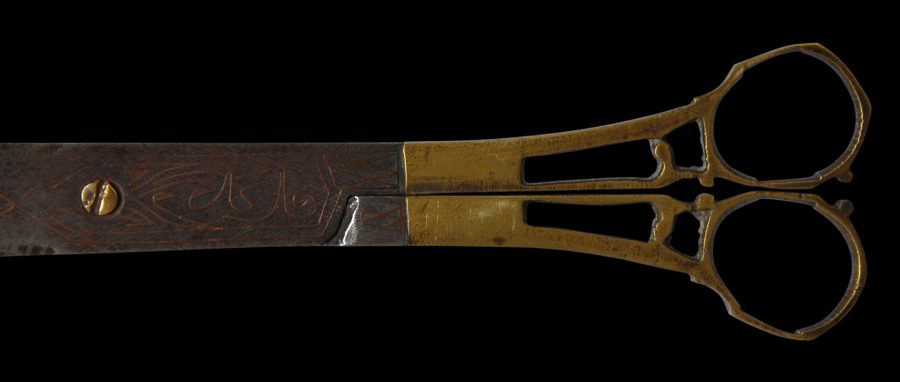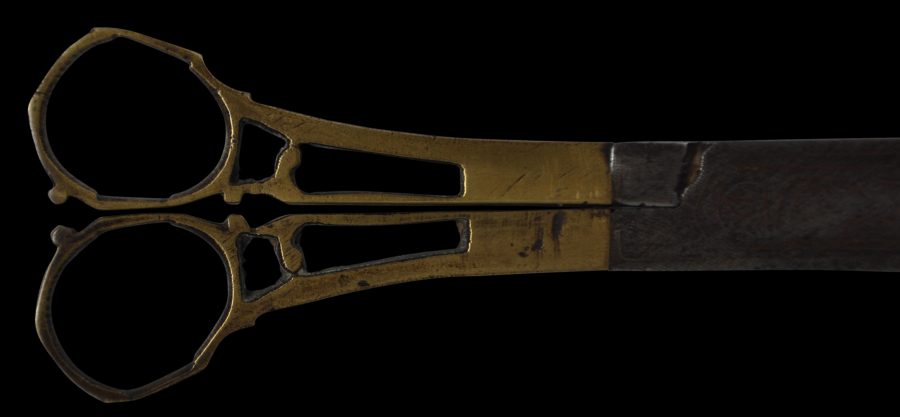Enquiry about object: 2875
Ottoman Calligrapher’s Scissors
Ottoman Turkey 18th-19th century
length: 27.5cm
Provenance
UK art market
This unusual pair of scissors was made for a calligrapher and was used to trim fine paper, most probably for use in a Koran or similar religious text.
Korans, and indeed any other books or documents, had to be written by hand prior to the advent of Arabic typeset. Scissors such as these were part of the calligrapher’s tools of trade. They were used to cut paper sheets to the correct size prior to binding. Such scissors were used to cut only the finest paper. Thicker paper was cut using shears.
The handles, of gilded brass or steel are oval in shape. The blades are unusually long and ‘plump’ in relation to the handles. They are concave and are inlaid with Koranic Arabic inscriptions with thin strands of copper. Unusually, the inlaid inscriptions to the insides of the blades as well as to the outside surfaces.
The scissors are in fine condition. Some of the copper inlay has been lost. The blades close well and evenly.
References
Allan, J.W., Persian Steel: The Tanavoli Collection, Yassavoli Publications, 2000.
Koc, A., et al, Istanbul: The City and the Sultan, Nieuwe Kerk, 2007.
McWilliams M. & D. Roxburgh, Traces of the Calligrapher: Islamic Calligraphy in Practice c. 1600-1900, Museum of Fine Arts, Houston, 2007.
Melikian-Chirvani, A.S., Le Chant du Monde: L’Art de l’Iran Safavide 1501-1736, Somogy Editions D’Art, 2007.
Savage-Smith, E., The Nasser D. Khalili Collection of Islamic Art: Science, Tools & Magic, Part Two: Mundane Worlds, The Nour Foundation, 1997.






